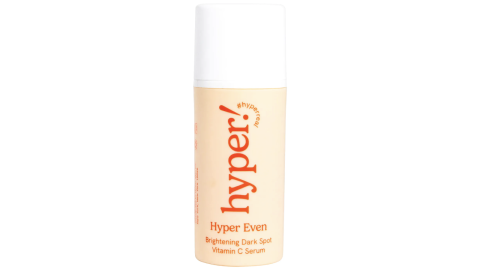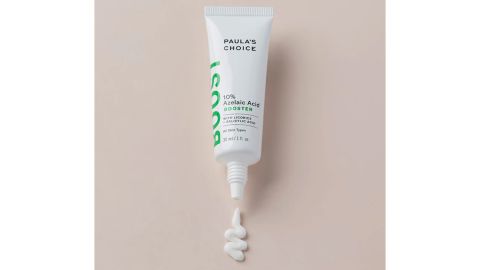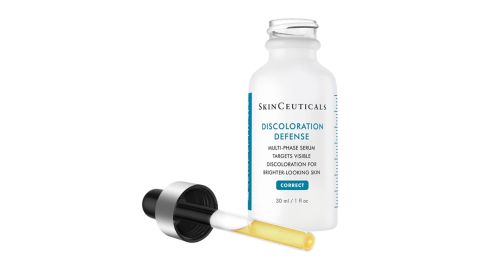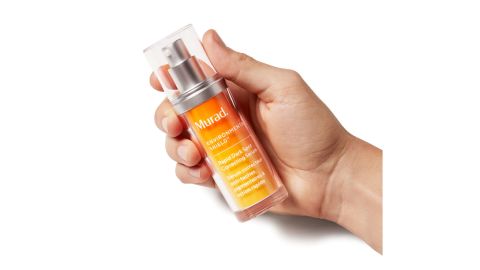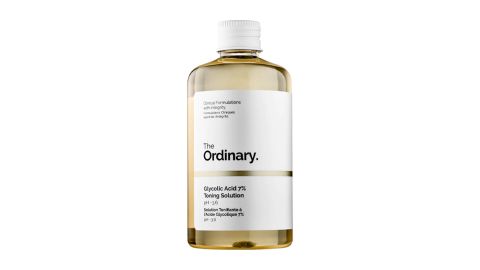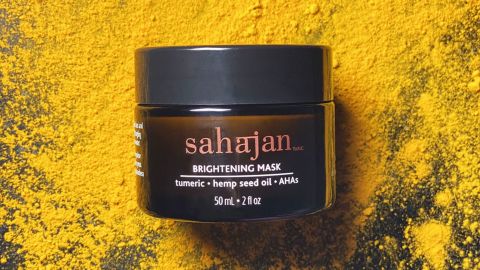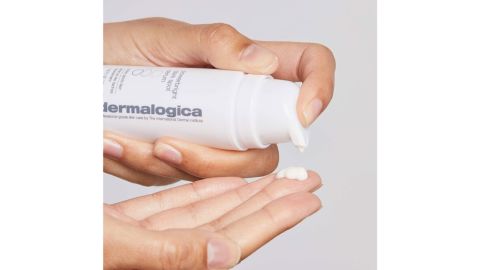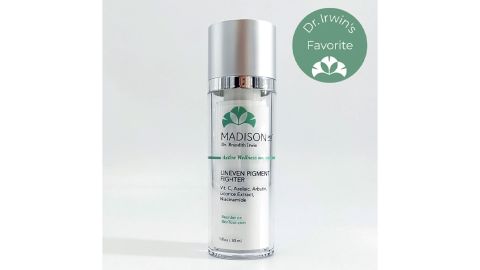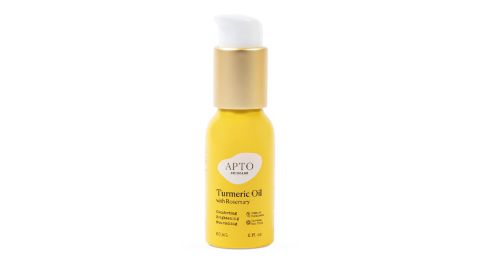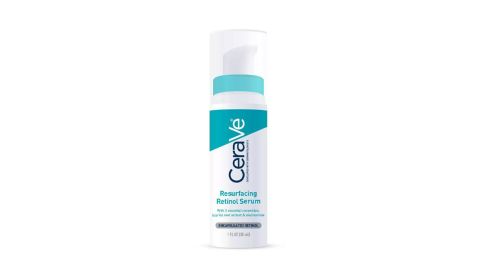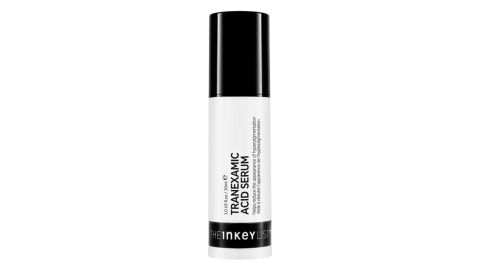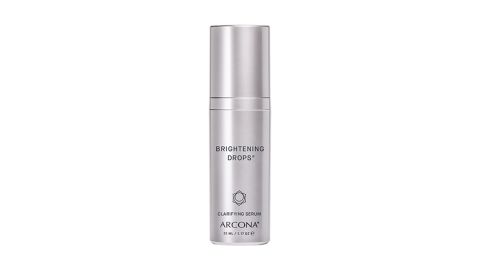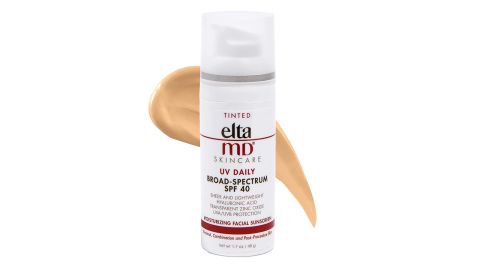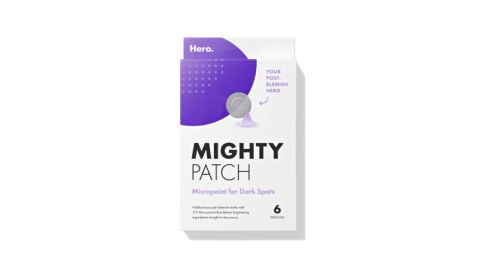Hyperpigmentation, recognized by darker patches of skin due to increased melanin production, is one of the most common skin conditions, with melasma (a form of hyperpigmentation) affecting nearly 5 million people in the United States. Though some types of hyperpigmentation fade naturally or with age, most take longer to go away and require a treatment plan. This is less intimidating than it sounds, however, with plenty of derm-approved skin care products out there to help.
Here, we consult dermatologists to home in on the root causes of hyperpigmentation and melasma and how to best to treat uneven skin tones.
Though studies show that women and skin of color — with increased melanin levels — are more at risk of hyperpigmentation, it is a common concern for all ages, genders and skin types. “Melanin is a substance in your body that produces hair, eye and skin pigmentation,” says Dr. Blair Murphy-Rose, a New York City-based board-certified dermatologist. “There are several factors that can trigger an increase in melanin production, but the main ones are age, hormones, sun exposure and skin injuries or inflammation.”
There are two main ways that hyperpigmentation appears on the skin — localized or diffuse — the former arriving in more concentrated, smaller patches, while the latter manifests in larger, dispersed areas. Localized hyperpigmentation is the most common and is often caused by injury or inflammation to the skin, such as UV damage, acne and hormonal fluctuations seen during pregnancy or when taking birth control.
Then, there are three main types of hyperpigmentation — post-inflammatory hyperpigmentation (PIH), age spots (also known as solar lentigo) and melasma — each of which have distinct root causes and ways to best approach treatment. “Melasma quite classically presents as pigmented patches in a butterfly pattern on the cheeks and forehead,” explains board-certified dermatologist Dr. Teo Wan Lin. “PIH tends to have fuzzy borders, whereas age spots have a discrete edge.
“Skin of color is prone to hyperpigmentation in general,” Teo continues. “Dry or eczema-prone skin may develop worse [hyperpigmentation] symptoms compared to those with oily or combination skin because of a weakened skin barrier.”
Melasma is a common skin disorder and type of hyperpigmentation that is mainly present amongst pregnant women. The condition is most commonly triggered by an increase in the hormones estrogen and progesterone, but can also be caused by UV exposure, thyroid disease and certain medications such as retinoids, blood pressure medication and birth control pills. “Melasma is a common acquired disorder of hyperpigmentation that affects sun-exposed areas,” Murphy-Rose says. “It appears as hyperpigmented, irregular patches and most commonly affects women of reproductive age and only rarely occurs in males. It has been linked to sun exposure and estrogen.”
According to the American Board of Dermatology, melasma often manifests during a woman’s reproductive years, and is most common amongst those with medium to dark skin tones and predisposed genetic factors. A recent study found that almost half of surveyed melasma patients have a relative with the condition.
When melasma appears, it will form tan, brown or blue freckle-like spots or patches. While it is most found on the face, cheeks, forehead and chin, it can also appear on the legs, arms and neck. “The hormonal aspect is largely what differentiates melasma from hyperpigmentation and can make it more difficult to resolve,” says Chanel Jenae, Arcona owner, creative director and esthetician. “Melasma typically looks more like patches on the face, whereas hyperpigmentation can appear as sunspots, dark spots or freckles and is usually more diffused.”
How to treat melasma and hyperpigmentation
“To treat melasma, getting a dermatologist involved is key,” says Dr. Brandith Irwin, board-certified dermatologist and founder of skintour.com and MadisonMD Skincare. “If the problem is post-inflammatory hyperpigmentation — acne, a superficial scrape — then it may be reasonable to try at-home remedies, such as the MadisonMD Skin Care Uneven Pigment Fighter, for a month or two.”
Irwin advises that resurfacing treatments, such as lasers, may worsen melasma unless conducted by an expert. However, laser treatments are often better suited to aid other forms of hyperpigmentation, especially if caused by sun damage. Though most opt for at-home treatments and care, the quickest way to treat for hyperpigmentation is through dermatological procedures such as chemical peels, lasers, microdermabrasion and dermabrasion. For at-home users, look for products that are rich in alpha hydroxy and kojic acids and vitamin A (such as retinol and tretinoin), all of which aid in cell turnover and skin rejuvenation.
Though treatments are vital in treating hyperpigmentation, dermatologists advise that prevention is one of the best forms of treatment. “Proper suncare — SPF, wearing hats, protective clothing and tinted SPFs — are all beneficial.” says Irwin. “Wear hats with a full brim when outside whenever possible. If you have melasma on the forearms, keep them covered. If you’re not sure what pigment is due to, see a dermatologist as soon as possible.”
Best products for melasma and hyperpigmentation
Hyper Skin was founded after the founder’s own struggles with acne and dark spots. The top-rated formulas are made with melanated skin in mind, and this hyperpigmentation treatment targets dark spots with 15% vitamin C, plus bearberry, licorice and kojic acid.
Utilizing a unique formula composed of azelaic and salicylic acid and licorice root, this treatment is the ultimate multitasker, helping to smooth the appearance of blemishes and texture all the while calming redness and evening the skin tone with regular use. You can apply it directly from the tube or mix it into your favorite moisturizer or serum.
Dermatologist favorite SkinCeuticals’ daily dark spot corrector is perfect for dry, oily or combination skin and aids in reducing discoloration and hyperpigmentation. The product is the perfect at-home alternative for those apprehensive to try more invasive procedures like peels or lasers.
This serum has rave reviews for its ability to quickly fade dark spots and hyperpigmentation. It features the antioxidant resorcinol, along with tranexamic and glycolic acids to brighten and balance the skin. “I didn’t know how much I loved this stuff [until] I ran out and noticed my texture and breakouts came back,” one reviewer shares. “This serum definitely works! My dark spots got lighter within three weeks, my skin is smoother and brighter. I have sensitive acne-prone skin and this wasn’t irritating; I use it every morning.”
This exfoliating toner from The Ordinary targets uneven, dull skin through glycolic acid — proven to directly improve the complexion over time. While the toner can be used daily (and should always be followed up with SPF), those with sensitive skin should be cautious using this product as it may cause irritation.
This anti-inflammatory mask contains turmeric, holy basil and fruit-based alpha hydroxy acids to brighten the skin and improve the look of dark spots. One reviewer raves, “I have acne, early signs of aging and pigmentation issues and this mask helped out exponentially after one use. I love the fact it contains glycolic acid — a must-have in my skin care routine.”
Dermalogica’s dark spot serum includes top-notch ingredients like ashwagandha, black currant oil, peony flower and niacinamide. The daily serum’s light-diffusing technology is proven to improve the appearance of hyperpigmentation after just one use.
A favorite of Irwin’s, this Pigment Fighter fights melasma and dark spots with vitamin C, azelaic acid and nine plant-based brightening ingredients.
Apto founder Marta Cros experienced melasma after giving birth to her second child and created this turmeric oil to ease the side effects of the harsh tretinoin and hydroquinone creams that left her skin flaky and inflamed. The antioxidant-rich turmeric soothes the skin and can also help reduce acne scarring, while the coconut oil conditions the skin and supports the skin barrier.
While venturing into the world of retinol may be daunting for some, CeraVe’s resurfacing serum is the perfect starting point. The price-friendly option reduces post-acne marks and scarring while also resurfacing the skin.
Targeting dull skin, scarring and hyperpigmentation, this a.m./p.m. tranexamic acid serum from The Inkey List touts brightening and boosting ingredients like acai berry extract and vitamin C.
Sun spots, discoloration and melasma fade with nightly usage of this serum. It contains kojic acid, azelaic acid and vitamin C to even the skin tone.
This dermatologist-recommended tinted sunscreen gives a sheer glow to any skin tone and protects from worsening hyperpigmentation with zinc oxide.


